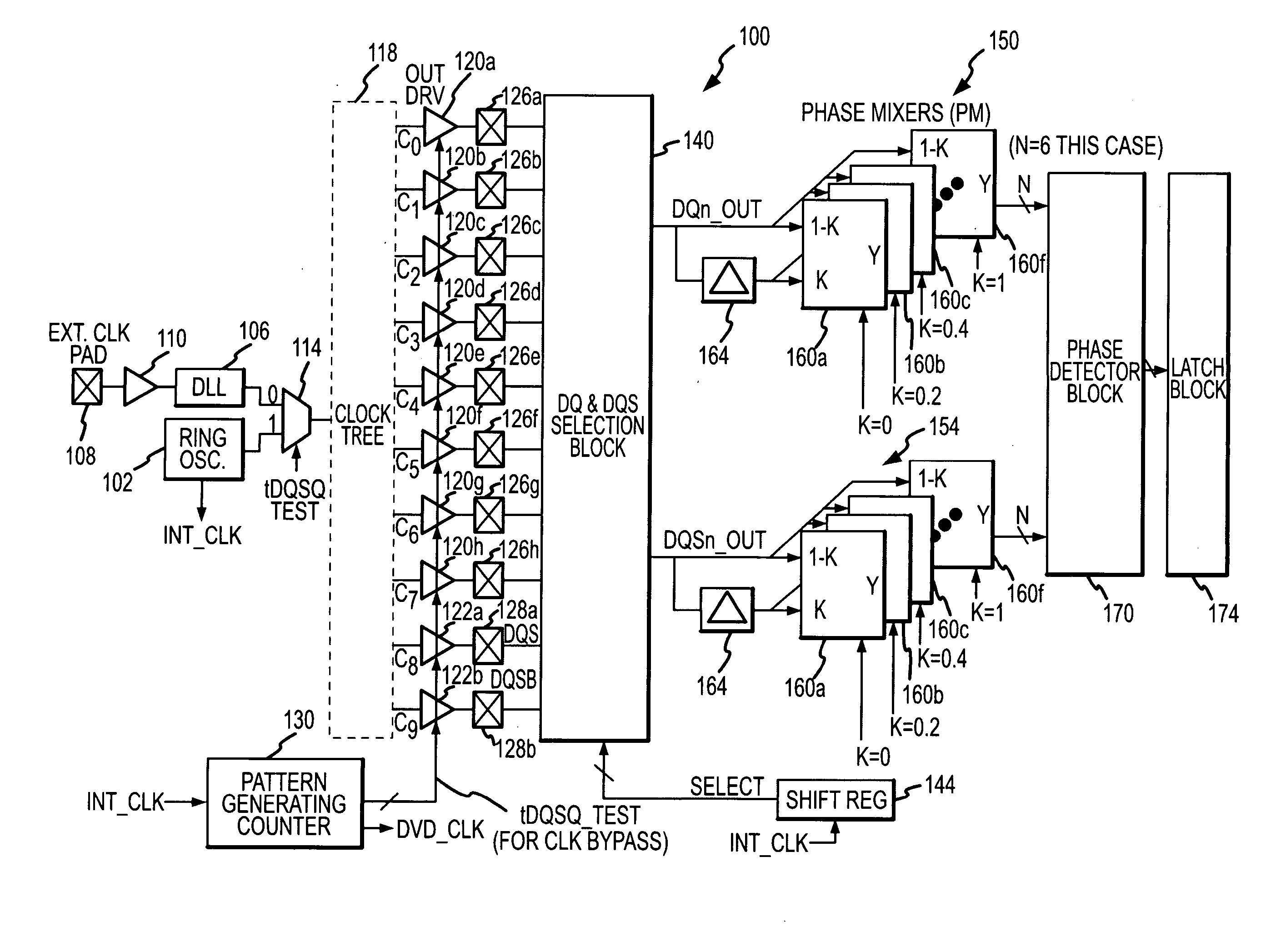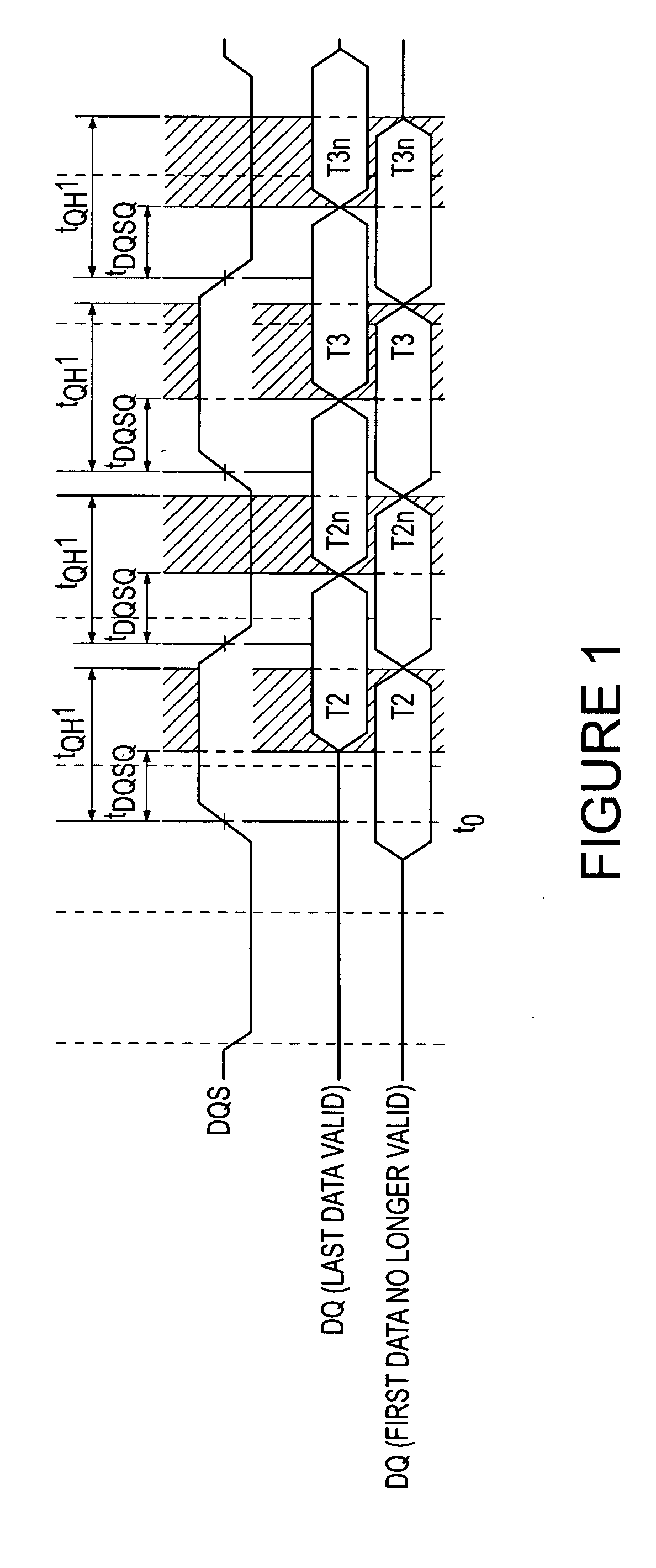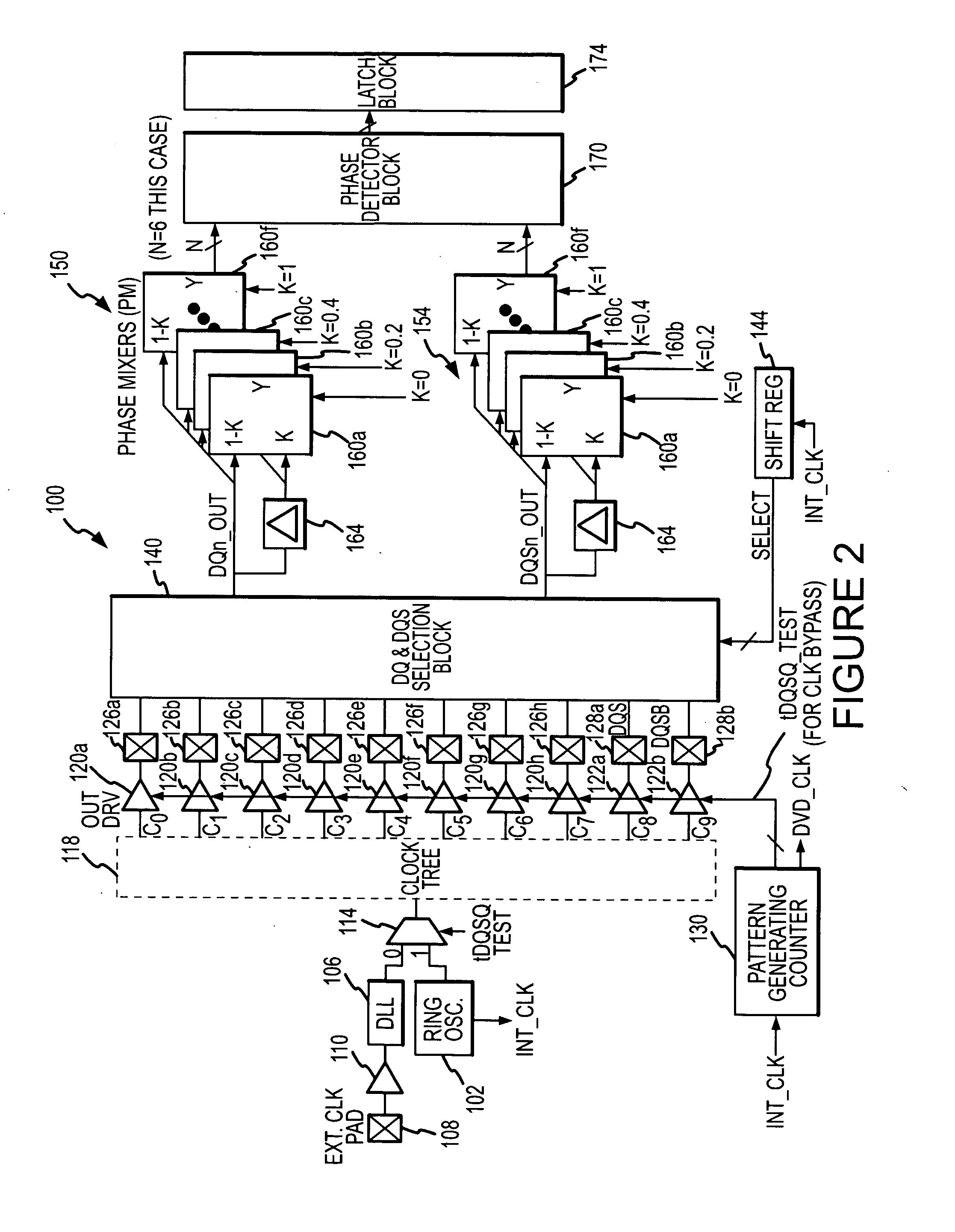Built-in system and method for testing integrated circuit timing parameters
a timing parameter and integrated circuit technology, applied in the field of integrated circuit devices, can solve the problems of difficult to test the timing characteristics of the integrated circuit, the testing environment is not without limitations and disadvantages, and the memory device is more difficult to position the transition of the dqs
- Summary
- Abstract
- Description
- Claims
- Application Information
AI Technical Summary
Problems solved by technology
Method used
Image
Examples
Embodiment Construction
[0014] A built-in self-test system 100 according to one example of the invention is shown in FIG. 2. The self-test system 100 is preferably fabricated on the same substrate as a memory device (not shown) being tested, although other configurations may also be used. The system 100 includes a ring oscillator 102 that generates a periodic clock signal that is used during testing. During normal operation, a clock signal is generated by a delay-lock loop 106 responsive to an external clock signal applied to an external terminal pad 108 and coupled through a driver 110. The advantage of using an internal oscillator is that it may be possible to make the frequency of the clock signal higher than the frequency of an externally applied clock signal. A multiplexer 114 responds to a tDQSQ test signal to select as an output clock signal the output of the delay-lock loop 106 during normal operation and the output of the ring oscillator 102 during memory device testing. The ring oscillator 102 al...
PUM
 Login to View More
Login to View More Abstract
Description
Claims
Application Information
 Login to View More
Login to View More - R&D
- Intellectual Property
- Life Sciences
- Materials
- Tech Scout
- Unparalleled Data Quality
- Higher Quality Content
- 60% Fewer Hallucinations
Browse by: Latest US Patents, China's latest patents, Technical Efficacy Thesaurus, Application Domain, Technology Topic, Popular Technical Reports.
© 2025 PatSnap. All rights reserved.Legal|Privacy policy|Modern Slavery Act Transparency Statement|Sitemap|About US| Contact US: help@patsnap.com



